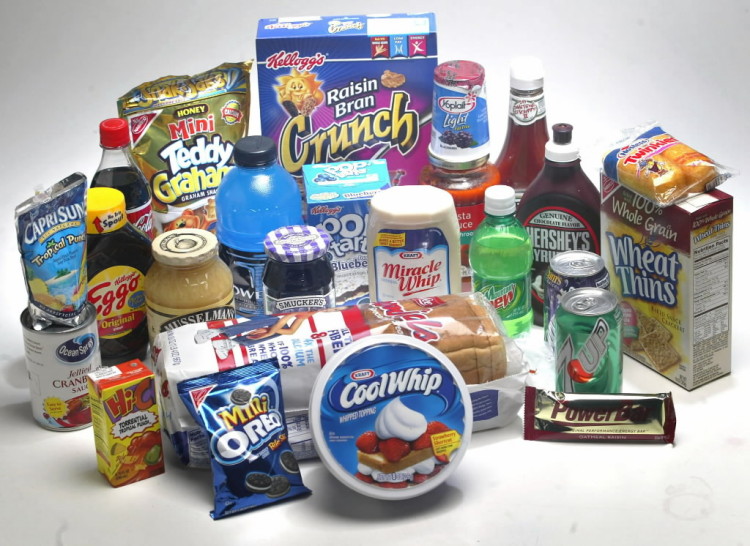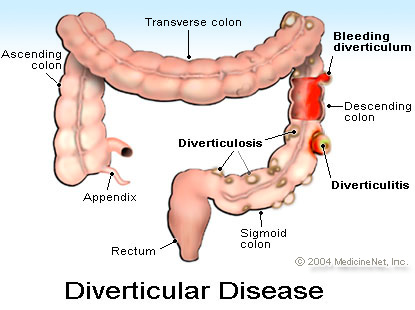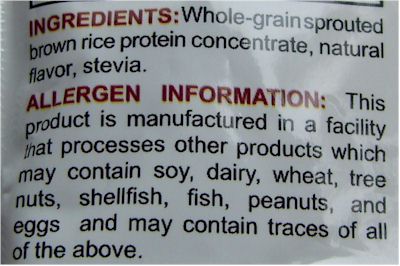Special Diets SHTF
Sorry for the delay and lack of news letters. The last few weeks have been STUPID BUSY. But we’re back.
So once again I delve into my wife’s illness Diverticulitis. So far she is steadily improving, but we have to accept the fact that her diet is going to be forever changed. For those just joining us, last month my wife got admitted to the hospital for 10 days with Diverticulitis that ruptured 10 cm of her sigmoid colon. So there is that. Also about a year ago we finally decided to see why her stomach was always upset with all the normal effects. Our family doctor did what is called a Hydrogen breath test. Well the test showed that she has trouble digesting fructose. Yup fruit sugar. She was tested for all the food sugars and Fructose is the one that gets her. Fructose intolerance. Who’d a thunk it? Well for about 7 months we thought it was BS. Sensitive to fruit sugar??? You got to be KIDDING me! Well the symptoms of fructose intolerance are identical to Lactose intolerance. Enter in High Fructose Corn Syrup . Can you imagine the pain of being fructose intolerant AND having Diverticulitis? Well we started pulling it from her diet and OH MY GODS EVERYTHING has it in it. How the hell does the diet conscious prepper afford to buy things what do not have HFCS (High Fructose Corn Syrup) in it. 
Image courtesy of Michelle Porter Fit
Here is a short list:
Ketchup
Barbeque sauce
Crackers
Cereal bars
Salad Dressings
Jellies
Jams
Apple Sauce
Bread
Some prepared baking mixes
Canned Fruit
Breakfast cereals
Condensed SOUPS (Some not all)
Ramen Noodle (YES RAMEN) The Marukan brand doesn’t have HFCS, but the Nakano brand does
Pastas
And just about every prepared boxed food.
Ok What about the diverticulitis diet? That one is actually easy. After the healing period starts her dietician gave her 2502 different pieces advice! No nuts or seeds Wait it’s ok to have nuts and seeds. High fiber, uh no fiber. High protien, wait scratch that low protein High fat low fat. Cooked vegetables raw vegetables Skin on potatoes skin off. Beans No beans ARRRRGH!!!!

Image courtesy of Medicine Net and E Medicine Health
So what we have done is start keeping a log. How do you feel after, Dinner Lunch Breakfast? Keeping track of what agrees with her and what doesn’t. Making and putting up and caning large amounts of homemade soups. And learning how to read labels. And learning new ways to preserve and store foods.
Ok So that one is out of the way. But now what Gluten allergies/Sensitivities. A couple of years ago Cat Ellis The Herbal Prepper and I talked about that subject. We brought in a guest and for the life of me I can’t remember his name but confirmed a theory I had on gluten allergies
From the 1500’s to the 1960’s wheat didn’t change very much. A tall grass that was susceptible to storm wind and insect damage. Come who has NOT read Laura Ingalls Wilder’s books Little House books? And seen how many times he Pa had his wheat crop devastated by wind hail wild indians, Wait wrong book! Seriously Wheat was a grass that grew 4-7 feet high. Starting in the early 20th century Scientists were trying to make wheat be less damaged by wind rain insects etc. And by the 1970’s they had made huge progress and by the late 90’s wheat had gone from a plant that varied it’s height from 3-7 feet to what we commonly see today in wheat fields which is 24 inches. As a boy, I remember wheat being past my dad’s waist and up to his shoulders. . About 3-4 feet. It is commonly thought that the forced hybridization, the predecessor to GMOs It has been dwarfed, made more robust, and had its gluten content deliberately increased in modern time to up to 50% higher levels than ancient forms of non-hybridized wheat. A predictable correlation: over the same 50 years, celiac disease has increased by 400%, and the rate of gluten intolerance parallels that rise. In fact one theory puts forward the hypothesis that we are ALL gluten sensitive in one form or another. WHAT??? How can that be?

Wheat hybridization progression image courtesy of Our Health Coop
While our ancestors have been around for about six million years, the modern form of humans only evolved about 200,000 years ago. Ok. Now modern agriculture only started 6,000 to 10,000 years ago. A blink in the eye of our existence. Now add in the fact that for that for 5,550 years wheat did not change very much, and the amount of it we ate and compared to the number of gluten sensitive people was pretty low, But this last 50 years. That 50 is the key item. First 6000 years is not a long time for evolution to change something. But when you change that item (Gluten) that evolution would eventually correct something has to break . And it’s us.
So back to the prepared prepper. Wheat is a HUGE part of the basis of most “survival foods” What can you do if you can’t eat it? Umm stay so sick that you may die is one thing. Or find what you can eat and stock that.
Some with gluten sensitivity can eat the “heirloom” wheats, Einkorn, Spelt, Emmer, Farro types of wheat. These are “ancient grains”. I have some friends that can eat small amounts of breads I have made with them. But they still contain Gluten. But not as much and a different structure. It’s an option but YMMV ( Your Mileage May Vary). And like my wife above that is Fructose sensitive it takes the skills of Sherlock Holmes to find every spec of it on a label . Shasime You know that imitation crab meat. Gluten is in it. Most things that have gravy, Say that lovely can of Beef Stew. Gluten. Those potato chips, Yup some have gluten Not so much added but drifted in in the One Huge Factory ™ that makes chips crackers and pound cakes. The list goes on and on.
Now one thing There MAY be some people who use food sensitivity IE Lactose Gluten Nut Soy etc as attention getter. The people in MY group that have those issues, I can tell you as straight up fact that when they have something from their I can’t Eat This List. The pain is very real and other physical issues are REAL
This bit is from one a dear friend of mine who suffers (And she does suffer) from IBS and Gluten sensitivity.
Via Asababy
“First, it is time to crack down on all ingredient lists on your food. Double check your “edibles” stores (not just food but anything else you ingest, such as vitamins) and make sure they don’t have any allergens that could cause a flare-up. This of course includes any wheat, barley, rye and yes…even my favorite phrases such as “processed in a facility that also processes wheat” and “seasonings.” The problem with ambiguities in ingredient lists is that sometimes that leaves the door open for allergens to be present in food. Some people can eat food products with ambiguities and still be ok, but some cannot. Know your limitations–if you can’t eat a lot of fiber-dense foods for extended amount of time, make sure to have more to your stored food than just beans or oats.
I have even encountered certain food products that were actually labeled as gluten free and when I ate it, I had horrible bowel-related side effects. Sometimes you will find out that the processing facilities are incredibly lax in their food cleanliness protocols, or for whatever reason, that food just doesn’t agree with your body. Make sure that all of the food you store is food that you can eat with no side effects.
In case sh*t literally does hit the fan in your bowels, be prepared with things to help soothe the symptoms. In an emergency scenario, stress and tension will be high. Many times, stress will also trigger IBS symptoms regardless of how clean you are in your diet. Figure out which drugs and herbs work for you, if any, with your cramped stomach and/or intestines. If aspirin, or ibuprofen, or any other drug (that is easy to buy) alleviates some of your symptoms (even if it is just a bit), stock up on them. For a possible alternative, cramp bark is good for relieving cramping in most muscle fiber types, so it wouldn’t hurt to make a tincture of cramp bark and try it out.”

Image courtesy of Ask Alyssa @Go Dairy Free
Label reading AND interpretation .
As Asababy said you have to read the label. And you have to KNOW what it means. First off this isn’t about the serving size, (I personally think the serving size listed is designed for Ethiopian Children Famine Victims. Not most normal sized people) but the hidden ingredients AND what type of factory it was made in.
This shows that this product was made in a factory that makes EVERYTHING that are potential allergens/sensitivities to a lot of people. As you can see by the ingredient list this is more than likely some high priced organic gourmet food. And since it’s cost effective instead of having bunches of little factories One big one is used. And I can’t fault a company for doing that. Factories are expensive. Businesses are supposed to make money. ‘Murica!

But where does that leave the prepper that wants to store stuff for bad days, but everything they want to store is not compatible with their needs? Make you own storage foods. Seriously if you can’t buy something pre made then you have to make it yourself. But that is a letter for a different day.
This week is laying the groundwork for a series of newsletters on how to treat the symptoms of “stomach problems” Just because the world quit working your health issues went away. It’s time we spent some time on folks who can’t eat what is sold and how to treat the reactions when they do because it’s eat or starve.
